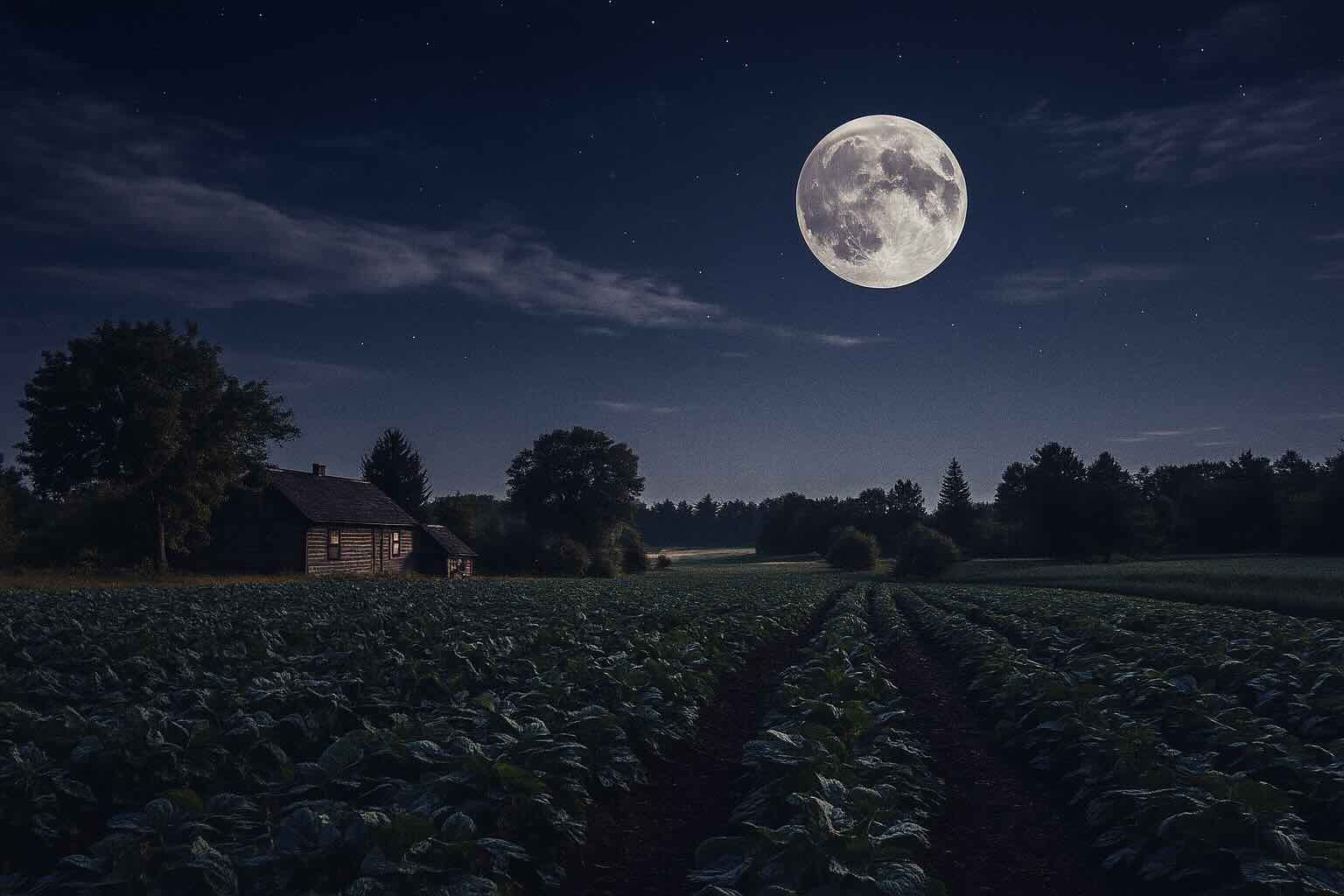For thousands of years, farmers around the world have looked to the moon to guide their planting, harvesting, and soil care. From ancient China to medieval Europe, the lunar calendar shaped agriculture. But today, as we combine tradition with scientific inquiry, the question remains: does the moon really affect how crops grow?
Why Farmers Watched the Moon
The moon has always been more than a light in the night sky. Its phases marked the passage of time before calendars were invented. Farmers noticed patterns: certain crops seemed to thrive when sown during waxing moons, while root vegetables performed better after the full moon.
These traditions became embedded in agricultural folklore, passed down through almanacs and rural wisdom. In many cultures, planting by the moon was not a superstition—it was simply practical guidance.
The Moon’s Gravitational Pull on Soil and Water
The most widely accepted scientific mechanism linking the moon to agriculture is its gravitational pull. Just as the moon influences ocean tides, it also affects groundwater in soil. While the effect is smaller on land than in seas, some researchers argue that soil moisture does fluctuate slightly with lunar phases.
During the waxing moon, higher soil moisture near the surface may favor germination and leafy growth. In the waning moon, moisture may recede deeper, encouraging root development. Although these effects are subtle, they could explain why lunar planting traditions emerged.
Lunar Light and Plant Rhythms
Beyond gravity, the moon provides light—though faint compared to the sun. Still, scientists have discovered that many plants are sensitive to even very low levels of light. Nighttime light exposure can influence flowering cycles, stem elongation, and leaf movements.
Certain plants, such as beans and sunflowers, show measurable changes in how they open or close leaves depending on moonlight levels. This suggests that lunar brightness may help regulate circadian rhythms in plants, much like it does in animals and humans.
Scientific Studies: Mixed Results
Modern science has tried to test lunar gardening practices with controlled experiments. The results are mixed. Some studies find that seeds planted during waxing moons germinate slightly faster, while others find no measurable difference.
A 2010 study in Brazil, for example, suggested that coffee seeds had higher germination rates when planted in specific lunar phases. Meanwhile, other trials in Europe on lettuce and spinach showed little effect. The inconsistency makes it difficult to draw hard conclusions.
What most scientists agree on is that local conditions—such as soil type, temperature, and rainfall—play a much stronger role than lunar phase. Still, the possibility of subtle lunar effects continues to intrigue researchers and farmers alike.
The Role of Biodynamic Farming
One modern agricultural system that embraces lunar cycles is biodynamic farming. Developed in the early 20th century by Rudolf Steiner, it treats farms as living organisms influenced by cosmic rhythms. Biodynamic calendars detail precise times for planting, pruning, and harvesting based on both lunar phases and astrological positions.
While controversial in mainstream science, biodynamic farming has gained followers worldwide. Some wine producers in France and Italy swear that their grapes and wines taste different depending on lunar cycles. Whether this is science or psychology, the results keep the debate alive.
How the Moon May Affect Agriculture in 2025
The year 2025 will bring four supermoons—moons that appear larger and brighter due to their proximity to Earth. Some farmers see these events as especially powerful for planting above-ground crops like grains and vegetables. Others time soil preparation around lunar eclipses, treating them as symbolic resets for the land.
Although there is no definitive scientific proof that supermoons boost plant growth, aligning farm work with these celestial events often deepens the farmer’s sense of rhythm and mindfulness in their work.
Science Meets Tradition
Even if lunar effects are modest compared to sunlight and rainfall, paying attention to the moon can still improve farming. Why? Because it encourages structure and observation. Farmers who follow lunar calendars naturally record planting dates, track outcomes, and stay in sync with nature’s cycles. These habits often lead to healthier crops, regardless of whether the moon is the direct cause.
In this way, lunar gardening functions as both science and art: it’s part agricultural experiment, part cultural ritual, and part ecological mindfulness.
The Bigger Picture: Why It Matters
With climate change altering rainfall and temperature patterns, many farmers seek ways to stay resilient. Looking to the moon may not solve these global challenges, but it offers a way to reconnect with natural cycles. In an era dominated by technology and data, lunar farming provides a reminder that agriculture has always been a partnership between earth and sky.
Whether proven by laboratories or not, the moon continues to inspire innovation in sustainable farming practices. It encourages farmers to observe more closely, adapt with patience, and honor the rhythms of nature.
Conclusion: A Guiding Light
So, does the moon truly change how crops grow? Science hasn’t delivered a clear answer yet. But what’s certain is that the moon provides farmers with more than light—it gives them a framework to stay in tune with the earth. For many, that’s reason enough to keep looking up at night.
As modern agriculture blends technology with tradition, the moon will remain a quiet companion over fields, reminding us that food production is as much about rhythm as it is about science.
